What are the networking methods of the Ethernet switch? Maybe in the usual project, we only see one or two of them. In fact, it has a variety of networking structures according to different projects. Below are four network structures for Ethernet switches.
CASCADE
It is the most common networking method through the Uplink port on the switch. This method is the connection between two or more Ethernet switches in a certain way. You can connect the Ethernet switches in a variety of ways according to the need.
In large LANs such as campus networks, the networking structures of multiple switches generally are bus, tree, or star cascade according to performance and usage.
Please note that the cascading number of Ethernet switches is NOT unlimited. If the cascading Ethernet switches are over a certain number, it would cause broadcast storms and seriously decline network performance.

STACKING
Stacking is the combination of more than one switch working together to provide as many ports as possible in a limited space.
Multiple switches are stacked to form a stacking unit. Stackable switch performance indexes include a parameter of a maximum stackable number, which refers to the maximum number of Ethernet switches that can be stacked in a stacking unit and represents the maximum port density provided in a stacking unit.
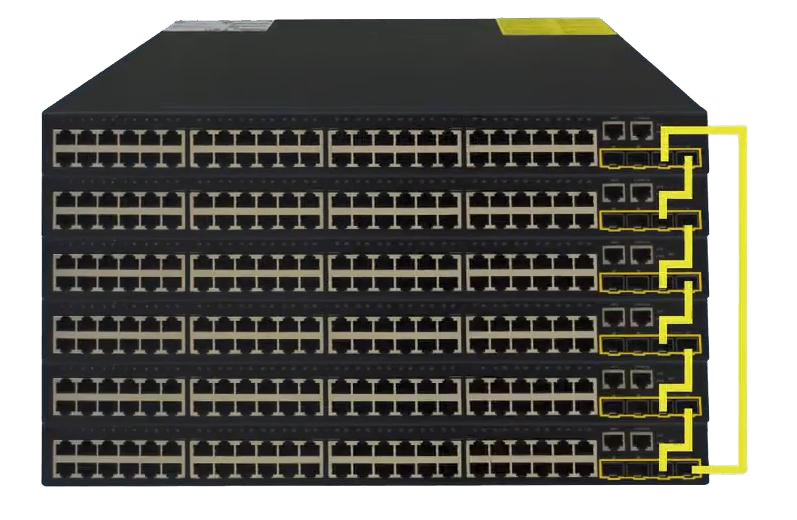
Unlike cascade, which is generally possible between switches of different manufacturers and models, stacking must be done between stackable switches of the same type (at least of the same manufacturer). On the other hand, cascading is the simple connection of switches, while stacking is using the entire stacking unit as a single switch, which means not only an increase in port density but also an increase in system bandwidth.
Stacking can greatly increase switch port density and performance. Stacked units offer the port density and performance of large rackmount switches at a much cheaper and more flexible investment than rackmount switches. That's where stacking comes in.
PORT AGGREGATION
Port aggregation bundles multiple physical links between two devices together to form a logical link, thereby multiplying bandwidth (the bandwidth of this logical link is equal to the sum of the bandwidth of the physical links)
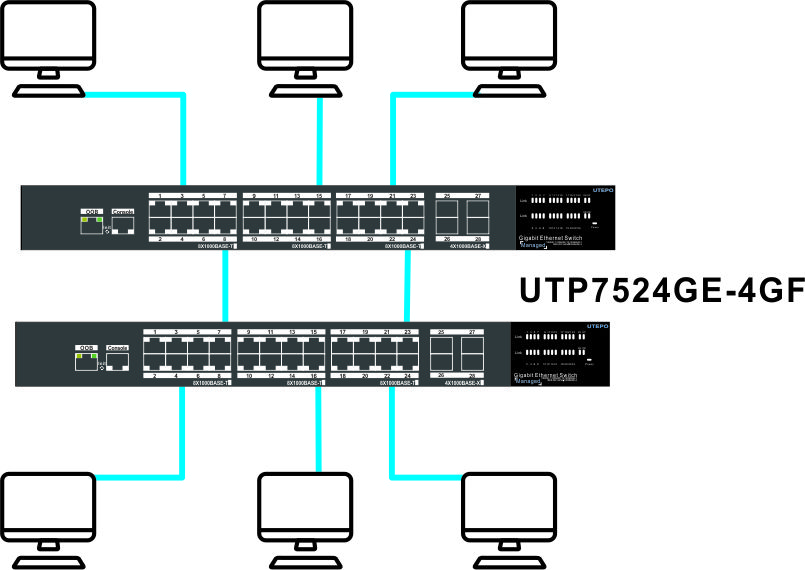
LAYERING
It is generally applied in more complex switch architectures, which can be divided into access layer, convergence layer, and core layer according to function.
This three-layer network architecture is designed using a hierarchical model, which divides the complex network design into several layers, each focusing on certain specific functions, thus enabling a large complex problem to become many small and simple problems.
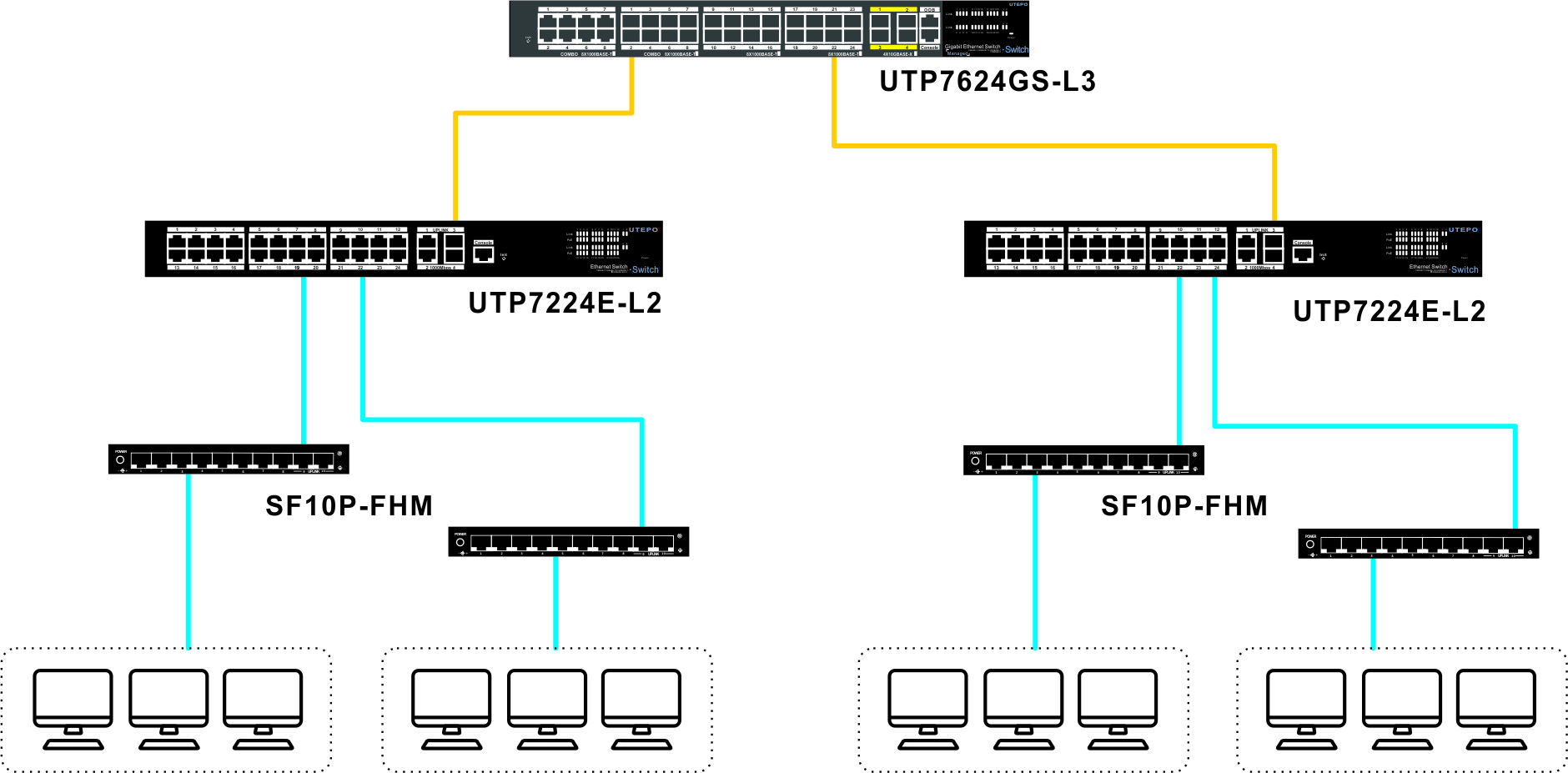
Layering is most used in following three common ways
SMALL-SCALE ENTERPRISE NETWORKING
The network with less than 100 access users is the small-scale enterprise network. It only contains the access layer and the core layer.
In this scheme, it divides each office network into independent VLAN and sets up a separate subnet. And it uses layer 2 switches in the access layer and medium-sized layer 3 switches as the core switch for data forwarding between each subnet.
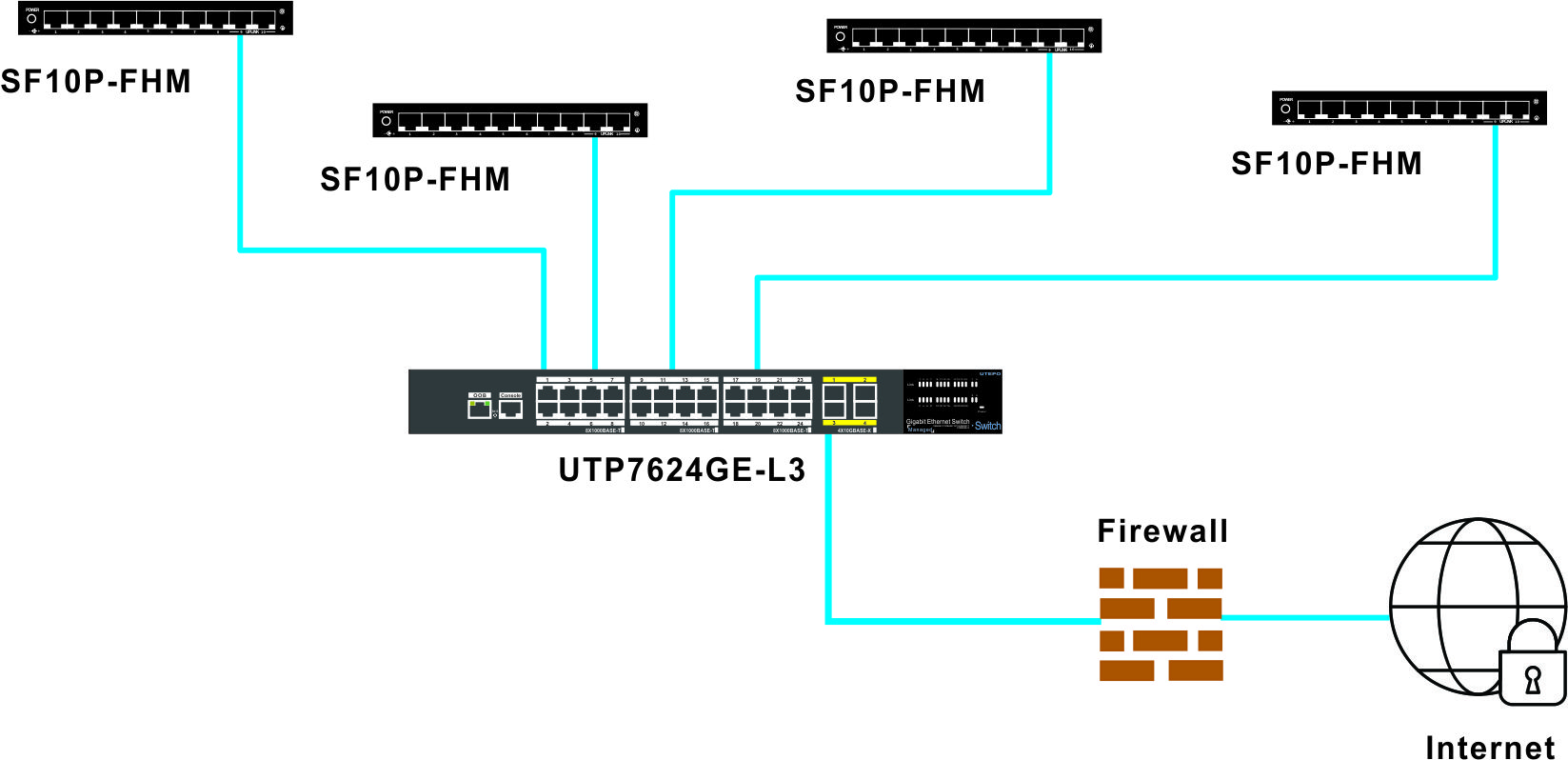
MEDIUM-SCALE ENTERPRISE NETWORKING
The network with 300 to 800 access users is a medium-scale enterprise network. Once the network is getting large, it is not easy to manage, so you can't use the networking for the small-scale network. For the medium-scale network, you can use the following method.
As the number of users in the network increases, it still uses Layer 2 switches in the access layer but adds layer 2 aggregation switch to perform aggregation and relieve the pressure on the core switches.
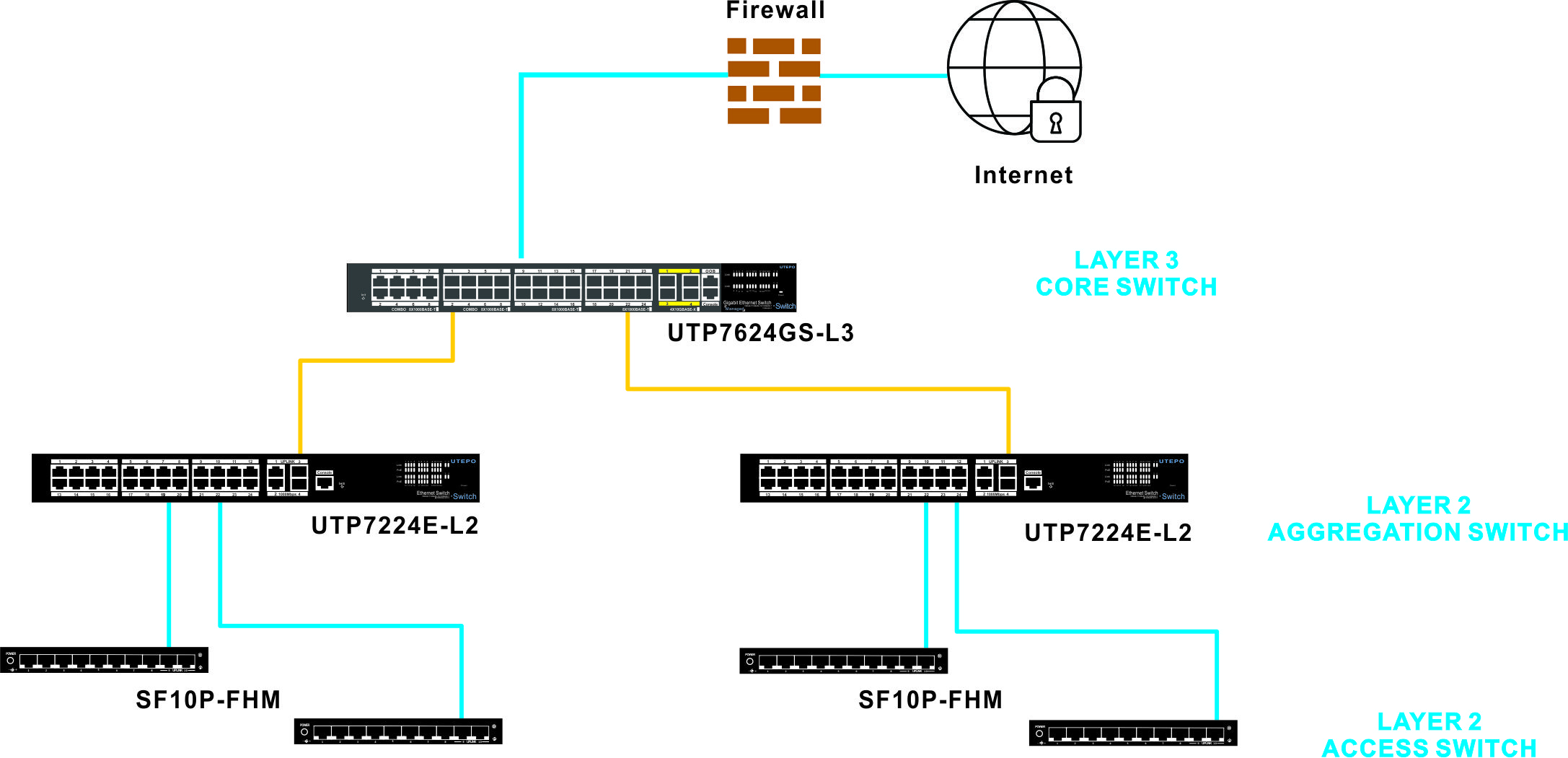
LARGE-SCALE ENTERPRISE NETWORKING
The following networking is for the enterprise network with access users between 1000 to 3000.
The principle is the same as the medium-sized network above. With the further expansion of the network scale, it may reduce the processing performance of the network due to heavy pressure and insufficient network resources caused by setting only one layer 3 switch as the core switching of the network.
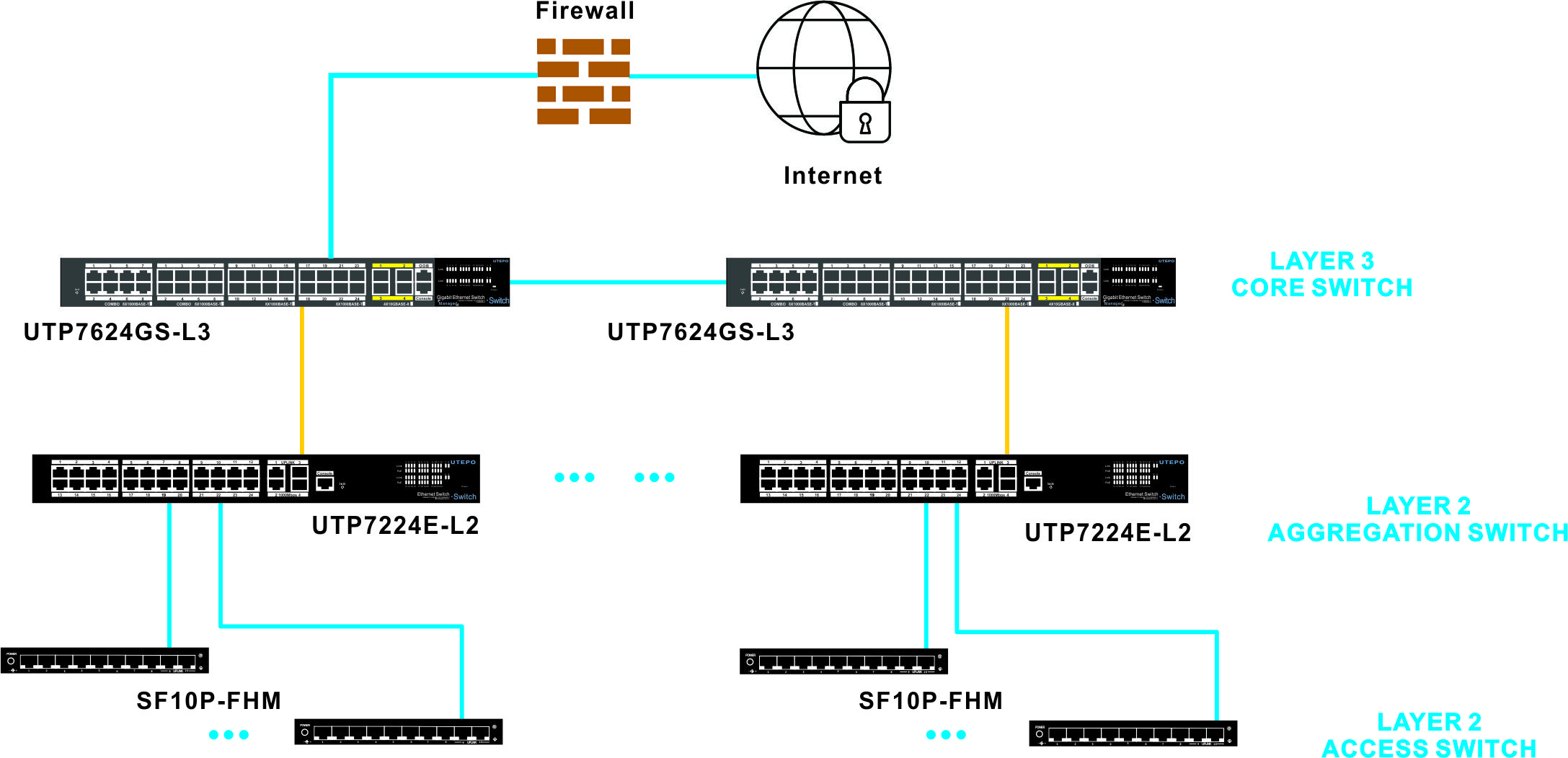
With only one core switch set in this scale network, it would inevitably lead to a delay increase in responding to user data, as all user-generated traffic will reach this core switch. Then the number of protocol datagrams it needs to process is also large, and the user would feel that the network speed seems to have slowed down. With the above concerns, it recommends setting more layer 3 switches to share the network pressure.
+86-755-83898016-863
+86-1501-2669-765
[email protected]
Note: To speed up our service to you, please make sure the field with " * " mark is filled before you click on "Submit" button, Thank you!